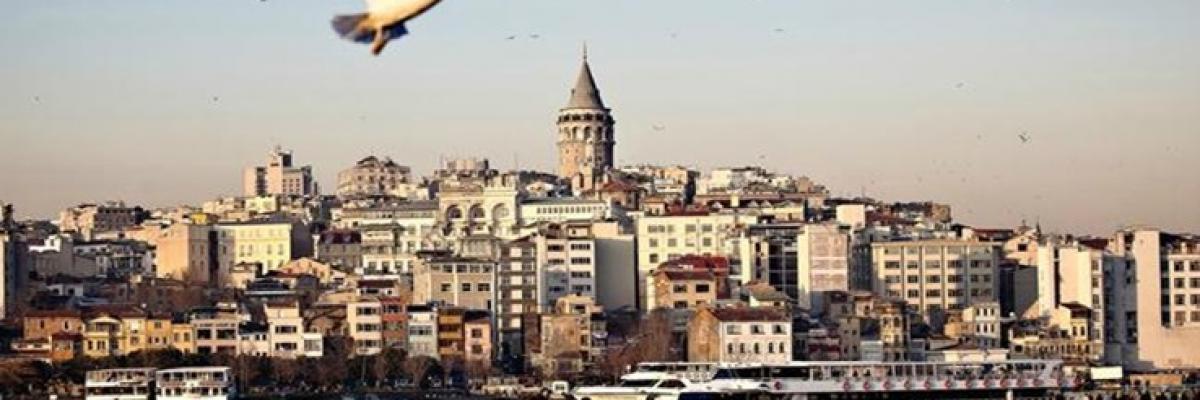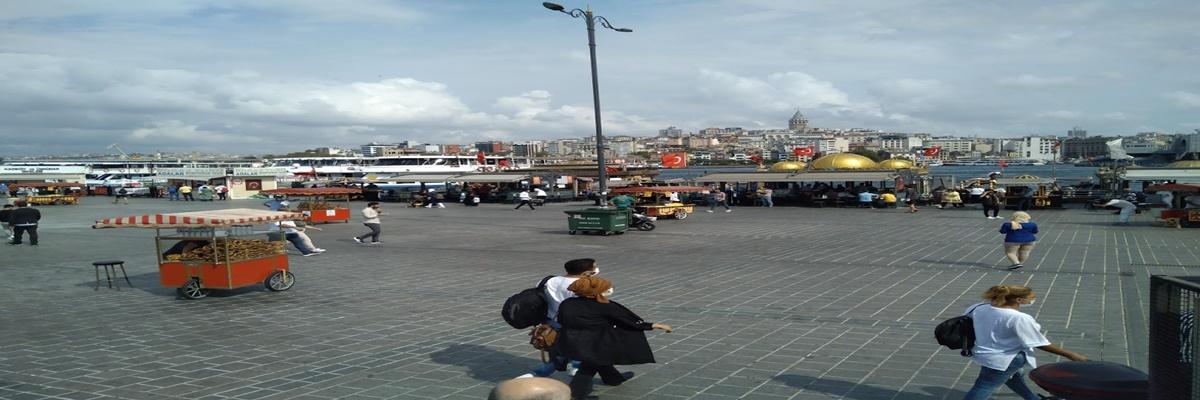Marriage Traditions in Turkey
Posted on 5 November, 2020 by Administrator

Marriage Traditions in Turkey

Marriage
Marriage customs in Turkey, which has existed since the earliest times, is an organization with a major emphasis on human life and society. Marriage as a term is a seamless combination of a man and a woman as husband and wife in any life situation. It is the foundation of the family, which is the cornerstone of society and has universal significance. Marriage law has certain rules and patterns that change the world, which are shaped by different cultures and require traditions and customs that define a particular society.
Different Types of Marriage
In the past, marriage between relatives was common. Today, due to the effect of urbanization, the rate of such marriages has decreased.
Another type of marriage is when a brother dies. In this case, the brother of the deceased man - either single or widowed - marries the widowed woman (Levirat). This is done to preserve the legacy of the deceased in the family and the well-being of children.
Another is "taygeldi" marriage. In this marriage, a widow and children from their previous marriage and a widowed man are settled in the house. And this is called Taygeldi marriage.
Another type of marriage frequently used in the past is "cradle cropping". While the children were still in their cradles, their families would promise each other and engage the children. If either boy or girl refused in the future, the families would consider it a matter of honor and make it into bloody family cases. Today, this tradition is almost nonexistent.
Another marriage arrangement or tradition in Turkey, "the interior güveys" marriage is. In this marriage, the groom moves into the house where his wife lives and lives with his wife's family.
In another marriage called "Berdel" or "exchange, different", two families have their daughters exchanged and married off to their sons in order not to pay the bride price.
According to Turkish traditions, marriage between "milk" brothers is not possible. Children who are breastfed by a woman (when a mother cannot breastfeed her child due to illness or other reasons) become "brothers" with the children of the woman whose milk they drink, and these "milk" siblings do not marry.
Marriage Age
General marriage age in Turkey is about 22 for men and 20 for women. It can vary between 5-6 years. Today, young people go to college, which often extends their age of marriage until they graduate. Older siblings are expected to marry before younger siblings, especially if they are of the same sex. Although the age of marriage varies according to regions today in regions where traditions are observed, the pressure to marry at a younger age continues.
In general marriage traditions, the first step towards marriage is expected from the groom and his family, and the family of the aspired girl remains passive.
Interpretation
Interrupt, does the girl have a heart for the boy? begins with asking. The two families interrupt in front of all the guests in the house, through the pilgrims (women researching the future bride). The engagement ceremony is completed by wearing a ring and an embroidered scarf purchased by the bridegroom's family. In some regions, the "Promise" is also called a small attendance ceremony.

Engagement
The first step after cutting is the engagement ceremony. The engagement ceremony is held at the bride's home and, in some regions, the expenses of the ceremony are covered by the groom's family, often by the bride's family.
After the date of the engagement ceremony is determined, an invitation called "invitation to neighbors" is made and distributed. The guests gathered at the groom's house go to the bride's house on the day of engagement.
In traditional sections of the community, men and women sit separately in the bride's house, and after lunch, together with the mother-in-law and the groom's relatives, the bride is put on jewelery and a special engagement dress.
In some regions, the groom does not come to the bride's house. In the engagement ceremony where the groom comes, rings are worn on the ring fingers of the right hands of the bride and groom by an old man close to the family, accompanied by standard words and wishes.
Nowadays, in many engagement ceremonies, wedding halls are rented, women and men sit together, mostly live music is played and everyone has fun. Thus, these ceremonies organized by the groom's family and friends look more elaborate and modern.
Wedding
Initially, the following information regarding the wedding ceremony, the former in Turkey, rural and conservative traditions, we should note that it is associated with. Weddings held in cities and in more modern environments today are more like a western-style wedding, with a wedding feast promoting families and couples. Also, all marriages are legally held in a civil ceremony organized and registered by a municipal official. In many cases, the religious ceremony precedes the civil ceremony a few days.
In the traditional setting, wedding ceremonies usually start on Tuesday and end on Thursday or start on Friday and end on Sunday. The wedding expenses are borne by the groom's family. Apart from regional differences, traditional weddings usually take place in the following order:
The wedding flag is sewn, the day before the wedding day, called the henna night, to organize a party where all the women in the family participate, and the henna is applied on the bride's hands. After this henna process, namely the coloring process, the groom removes the veil of the bride and the ceremony ends.
Before the wedding, as during the engagement ceremony, official invitations are distributed and relatives, friends and neighbors of the families are invited to the wedding. While the bride's family tries to complete the preparations for the dowry, the groom's family tries to complete the gifts so that the bride can be presented to her before, during and after the wedding. The wedding flag is erected by those who come from the noon prayer and by their boyfriends in the groom's house. In some regions, apples, onions, mirrors, etc. things are placed. This shows that the wedding is going on.

Henna Night
A traditional variant and perhaps a pioneer of the bachelorette party, henna night is held at the bride's family home with women of all ages close to the couple's family. In this ceremony, the bride's hands are decorated with henna. The groom's female relatives also participate in this event and are hosted at the bride's house.
Bridal Pickup
The next day, "Take a bride" (to bring the bride), "take a girl" (to bring the girl), "take the bride" (to carry the bride), etc. Everyone is invited from the groom's house to the bride's house for this ceremony procession with names.
If the guests are far away and close by car, they go to the area where the bride will be picked up, on foot. Before leaving the bride's home, the mostly red ribbon "Maiden Belt" (Virgin Belt) is tied to the bride's waist by her brother or a close relative and the bride says goodbye to those who stay at home.
While the bride is being taken from the house, sometimes the door is kept closed by a male relative of the bride, or a younger brother sits at the chest carrying the bride's dowry, not allowing the bride to leave. To make things easier, the groom's family tends to remove this last hurdle and take the bride.
Nuptial
An elderly woman in the wedding room joins the couple's hands together, placing them on top of each other. The groom fulfills his prayer and then gives him a gift so that he can see the bride's face. After the gift, she opens the veil on the bride's face. They eat the dinner offered by the bride's family and their doors are closed.

Marriage Traditions in Turkish Villages
Although marriage traditions in Turkish villages have been modernized from the past to the present, traditional practices are still observed in some regions of Anatolia. Marriage is at the center of the village society, both as an important event and for establishing relationships. The household is directly based on marriage and its internal structure is shaped by the marriages of its members. Almost all members of the household, except for kinship relations, are provided by marriages. Once a couple is reunited, they always direct their long-term plans according to their child's marriage. This central location of marriage is matched by the great importance and lavish wedding ceremonies it sees in society. Weddings are the most prominent days in village life and are almost the only occasion for organized entertainment. Their social and religious significance is consistent with their cost. A wedding can cost almost a household's total annual income.
In villages, men normally marry between the ages of sixteen and twenty-two, but there are always exceptions. Girls, on the other hand, normally marry between the ages of fourteen and eighteen. Orphans and the very poor sometimes marry younger. After a boy has made his choice, he goes to or sends the girl's home for an official visit to the girl's home, with one or two close relatives and a respected senior man who is less close to her as a negotiator. During this visit, the "bride price" requested for the bride is also spoken. In this way, the ceremony to ask for a girl is realized.
The next step, engagement, is done within a month. Groups of four or more women, including the groom's mother, relatives and unrelated neighbors, make an official visit to the girl's home, accompanied by two or three men. The next morning, a big ceremonial dinner made with the ingredients they bring with them is given. Two groups of women have fun singing songs in the evenings. These entertainments definitely happen without a man. Along with other gifts, including gold decorations brought for the bride during the fun, money is thrown on her while the bride dances.
During the following engagement period, the couples are forbidden to see each other and it is said that the father, who learns that his daughter violated this rule, will be violent. However, the couples somehow meet with the condolence of the women in the bride's house. In fact, all fathers know traditions and take care to avoid embarrassing situations. The engagement period can last from a week or two to several years. It can take much longer if the man is working far away or doing military service, or if the household has any accident.
The girl's house is responsible for providing the dowry. Preparations begin at the birth of a daughter and continue as she grows. There are also some shopping that the men in the groom's house can do. The fabric required for the wedding dress, a special wooden chest where the wedding dress will be stored for life, and gifts for relatives in the girl's house should be purchased. During the last visit to the girls' house before the wedding, a special meal is eaten again, the exact details of the dates, the number of guests and the like are determined.
Weddings begin four days or more before the date of marriage. A flag is hung over the groom's house and visitors are hosted in a large guest room. The fun begins with the arrival of the drummer and the zurnist. Throughout the day, men watch professional male entertainers dressed as girls wrestling, dancing or dancing. In the evenings, entertainment continues in the guest room. A ring-finding game with songs, stories, jokes, charades and coffee cups continues until late at night. Women, on the other hand, watch these entertainment from afar throughout the day. But in the evening, they dance tightly in a very spacious living room or guest room.
On the girl's side, there is less public entertainment. The women's close circle and neighbors meet to dance a few nights before the wedding. The day before the wedding (Henna night), the bride's right hand is painted with henna with a ceremony.
When the man's side comes to pick up the bride, the men and women are hosted separately. Coffee and cigarettes are served. Meanwhile, the female guests are hosted by the bride's close friends. Aunt from the male side and a aunt from the girl's side take the bride to a secret room where they dress for her husband. From this moment until she is alone with her husband, she is not allowed to speak, but continues to cry constantly. At the end, a large meal is served separately to men and women, and the groom's side takes the bride and prepares to leave the girl's house, accompanied by zurna and drums as they came. The bride, who leaves her father's house crying, is put on a white horse or donkey / carriage, if possible, and sets off with her new environment where she feels alone.
Turkey applied all over the threshold of a new home is found in many religious practices. In some areas, the bride enters her new home under the mother-in-law's legs. It was observed that hazelnuts and coins were spilled from the head of the bride by the groom. After the bride arrives at her new home, she must wait alone and remain silent until the evening for the groom to come to her. Upon the return of the community that brought the bride, the drummer and the whistleblower leave and the festivities in general end.
Some of the men attend the dinner as guests to the groom's house. After being shaved in silence by two or three specially chosen friends, the groom is dressed in clean clothes to attend this final sacred meal. The groom should not talk until he is alone with his bride. At the end of the meal, all the people accompany the groom during the evening prayer in the mosque. Later, a relative takes her by the hand, takes her home with religious chants and delivers it to the bride.
Normally, the bride price is either paid to the girl's side or paid during these final ceremonies. In addition, two fathers or other representatives of the couple negotiate with an imam and perform the imam marriage with a religious ceremony confirming the marriage. This is always done in secret, because it is believed that enemies can easily cast magic in the meantime to make the groom impotent. In theory, religious or religious marriage alone makes marriage valid in the eyes of the villagers. None of the other entertainments or festivities other than religious marriage is indispensable.
According to tradition, virginity is very valuable and the bride is expected to bleed on the first night (wedding). This is variable according to the regions, the absence of blood according to custom is accepted as evidence of chastity. A lewd girl should be sent home in shame, but no one is quite sure of what really happened in such a situation, or avoids telling the cases that happened.
The new bride is treated as someone special for a while in her new home. He wears his new clothes until he is old. He is not allowed to leave the house for a week or two and gradually gets used to his new duties in the household. Depending on the distance, he is not allowed to return to the father's home for a period ranging from a few weeks to six months or even a year. A few weeks later, her husband's family makes the way through the household on an official visit, after which her own people can visit her. It is said that the bride remained a foreigner in the new household for the first year.

Henna Night Need to Know About the Tradition in Turkey
henna tradition in Turkey, ahead of the marriage ceremony is very common in many parts of society. In ancient times, wedding ceremonies consisted of stages that took several days. On Monday, the "bridal dowry" would begin with sending to the groom's house. Taking the dowry to the groom's house was an important part of the wedding ceremony. The dowry was carried in a large, decorated chest made of wood or iron. The bridal bath was organized in the bathhouse the next day (Tuesday), and on Wednesday evening a henna party was held in the harem section of the house where the bride lived. At the same time, the men could have fun in the men's part of the same house (selamlık) or in the groom's house.
The henna night was an occasion where the bride, young girls and women seeking their future wife wore sumptuous, heavily embroidered dresses called bindalli. The bride's face was covered with a sequined red veil. The henna needed for henna night was brought to the bride's house by the bridegroom's relatives on a silver tray containing two lighted candles.
After all the guests had gathered, the bride's future mother-in-law would lay down a silk fabric carpet, which she brought with her as a gift. As the bride and her friends, carrying the burning candles, approached the guests, the guests would distribute coins to the bride's head as a symbol of fertility. The bride would walk along the silk cloth carpet towards her future mother-in-law (this was usually the moment they met for the first time), grabbed the woman's hand and kissed her respectfully.
Fruit and nut trays, pastries and marzipan were then served to guests. Songs composed only for henna nights were sung to make the bride-to-be cry. (It was believed that the bride's cry brought good luck)

Then the bride would sit on a mat, and her mother-in-law would put a gold coin in her palm. This gold coin was believed to be a symbol of good luck and abundance. Then, henna was smeared on the palms, fingertips, and toes of the bride, who is now considered to have a happy marriage. The bride's unmarried girlfriends would also rub henna on their hands, believing that this would get them married soon.








